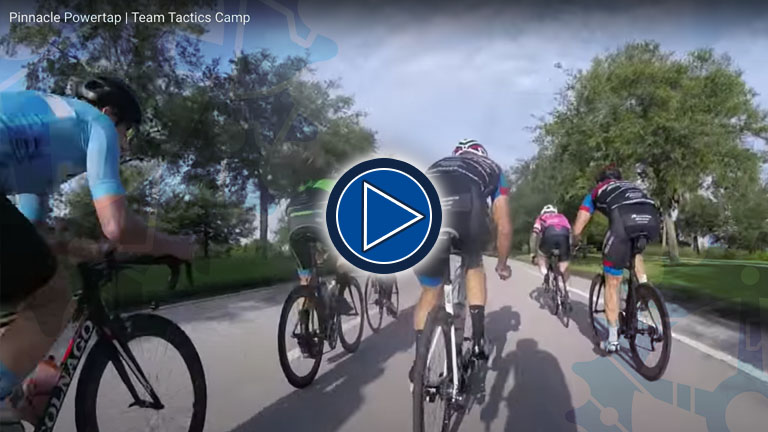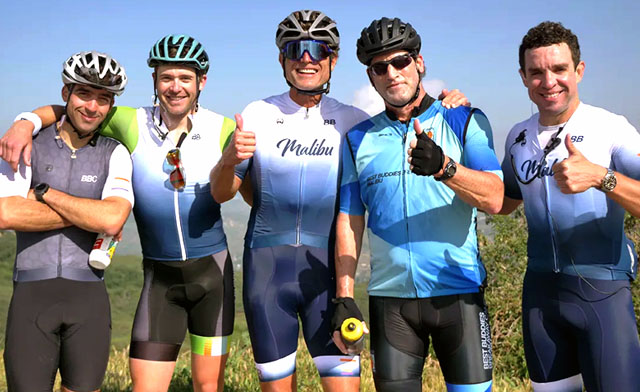It's all about the foundation
Its winter in Florida which means its time to change your training regime. Like you, I want to spend more time on my bike. I want to become more fit and use the winter season to provide a solid foundation for the 2016 racing season. However, in the process of developing my off season training plan it is important I am strategic in order to prevent peaking in January. Off-season training is essential. Key elements of effective training will be highlighted throughout this blog entry. Additionally, I will clear up common misconceptions and touch base on miscues associated with self-coached riders.
You fully understand that road cycling is an endurance sport. Therefore, cycling requires specific muscular and cardiovascular based demands. In order to effectively train, you must understand how to meet those demands. According to Joe Friel, Sports such as triathlon, road cycling, mountain biking and distance running are first and foremost dependent on the aerobic system-composed primarily of the heart, lungs, blood and the muscles' aerobic enzymes. The way to cause any physiological system to become more fit is to stress it regularly with an appropriate level of intensity for an appropriate duration until it has reached an optimal level of adaptation.
How hard and how long do we need to go?
First of all, you need to determine which approach best meets your needs as a cyclist. Riding at a steady pace in the range 70-80% of your FTP (Functional Threshold Power) forces your body to make changes. The changes that occur during this type of riding make you more efficient over time. Through increased oxygen consumption, burning fat as fuel, increased capillaries, mitochondria multiply and enlarge, and an increase in muscle glycogen storage your body is forced to change. Neglecting this stage can negatively impact your performance during racing season because you risk the potential of or competing with limited aerobic endurance. The graph, originally published on Training Peaks, emphasizes the physiological adaptations that align with training in zones 3-4.

Where are you spending the majority of your ride time?
There is not a hard and fast rule as to how much time you will need to spend in the specified ranges. There is not a specified time because everyone has varying levels of fitness. In addition to varying levels of fitness, a racer targeting a 50-minute criterium race clearly doesnt require the same volume of riding as an individual targeting a 3-hour road race. To pin point the baseline of your current aerobic fitness, it is useful to assess your stand-alone tempo rides at varying lengths. This will enable you to identify your current efficiency factor and your rates of aerobic decoupling. When you identify how long into your tempo rides aerobic decoupling occurs, you are better able to determining your level of aerobic fitness.
What should your goals be? For initial benchmark gathering purposes, riders targeting criterium events should start with 2 hour rides. If your goal is to be competitive at 3-4 hour road races, you need to ride AeT (55-75% of FTP ) for 4 hours.
This can be a difficult phase of training because we naturally want to go hard. However, you need to be patient as it takes time to see growth. When analyzing your data during this phases, you want aim to invest 40-50% of your weekly ride time in zones 3 and 4. The length of training in this phase typically takes 6-12 weeks.
The current trend encourages riders to ride with a moderate intensity at or slightly above one's aerobic threshold coupled with appropriate workout duration to produce optimal aerobic endurance. This trend exists because most people have only 1-2 hours daily to train resulting in training 8-10 hours a week. However, the trend does not enable you to maximize your time riding LSD (Long slow distances). The LSD approach may be an effective training strategy for stage racers, domestic pros and riders that have the luxury of putting in multiple 3-4 hour rides per week.
Misses and Misconceptions
The big misses in this phase of training:
- Riding more will make you faster: Riding more in the AeT range will make you more efficient, stronger, and yes eventually faster because you will be able to sustain higher end speed related work. Riding more and more intense will make you faster initially, but that will be short lived given you wont possess the necessary aerobic fitness required to maintain that form.
- Group Rides: Assuming you are training with others that share the same training beliefs, group riding is a great tool to add to your training. Group rides help pass the time and allow you to enjoy time with friends. Off-season training is the time to utilize them. However, what I see in most instances are 3-4 hour rides that are more like group races. Interestingly enough these rides return a NP(Normalized Power) in the tempo range. Upon closer examination of the power distribution chart associated with group rides, it is evident that the rider usually spends 40+% of their riding time in ranges that will not positively impact physiological adaptations. Additionally, the static nature of the power delivery associated with these types of files make them very difficult to use for data tracking purposes. This is evident in the power breakdown chart below.

Although the HR distribution on the right shows time in the ranges above FTP the power distribution chart on the left tells a different story
- Strength Work: Strength work essential, but should not take time away from riding. Cyclist should not neglect to incorporated bike drills that help the rider transfer their strength to benefit their power on their bike. During this time of year, cyclist should focus on bike power/strength specific drills. For example, torque intervals, big/little gear sprints, and 30-40 second big gear surges will enhance riding strength. These drills should be implemented twice a week at an intensity that they illicit growth.
- Core Work: Its very common to see riders log more miles, but do less work on their core during this phase of their training. It is important to stay balanced and remain regimented with your off the bike routine. Increased volume and intensity will essentially kick holes in areas that should have been addressed in a proactive manner prior to this stage of your training.
- Testing: How can you design and track growth if you dont have baseline values? It is essential that you test your FTP every 6-8 weeks. By assessing every 6-8 weeks, you can ensure that your plan and overall approach is aligning with your goals.
Finally, before you jump on a group ride or decide to chase down a pack up the road know that riding faster with less effort requires more structure, discipline, and a particular level of mental fortitude. You have time on your side. It is essential to step back, make a manageable training plan and track your progression. Remember, you need to be patient; physiological changes in many instances take 6-8 weeks. It is critical that you stay focused on your long term goal(s). Through your training, remember the more aerobically fit you are, the higher your peak level of fitness, and the longer you can stretch your peak. You dont have to work harder or continue down the same path as previous years. In fact, you can gain more fitness with less effort if you do it right! Having trouble sorting your data or unsure if your plan is designed to maximize your results, you can contact me personally. Invest in yourself and achieve your goals!
Patrick Sansbury
845-629-8299 or email me at Patrick@getyourpowerup.com


